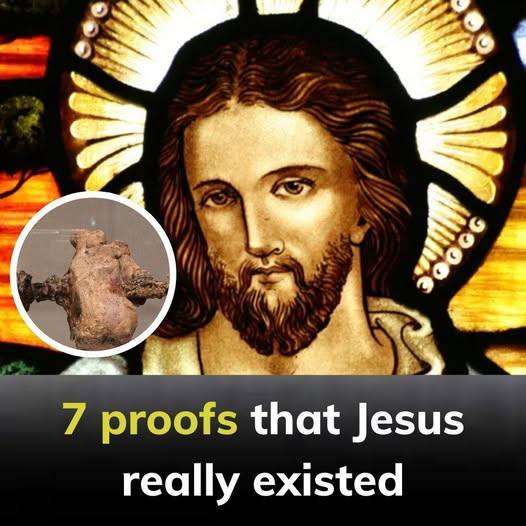
The question of whether Jesus of Nazareth truly existed as a historical figure has intrigued believers and skeptics alike. While the theological claims about his divinity are a matter of faith, historical evidence sheds light on his existence. Scholars and archaeologists have uncovered compelling clues that support the notion that Jesus was a real person who lived in first-century Judea. Here are seven key pieces of evidence.
1. Written Records and Historical References
Perhaps the strongest case for Jesus’ historical existence comes from written records, including accounts from non-Christian sources. Roman historian Tacitus mentions “Christ” being executed during Emperor Tiberius’ reign under Pontius Pilate, while Flavius Josephus, a Jewish historian, references “James, the brother of Jesus who is called Messiah” in his works.
Dr. Lawrence Mykytiuk, a Hebrew studies expert, explains, “For over 1,000 years, no one claimed that Jesus didn’t exist. Even non-Christian sources implicitly recognize him as a real historical figure”. The corroboration of Jesus’ existence from non-Christian sources lends significant credibility to the claim.
Additionally, early Christian writings, including the Synoptic Gospels (Matthew, Mark, and Luke), provide overlapping narratives about Jesus’ life and teachings. Though written decades after his crucifixion, they remain some of the most detailed records from antiquity.
2. Physical Evidence: The Crucified Heel and Ossuaries
In 1986, a construction crew uncovered the remains of a man named Jehohanan in Jerusalem. His heel bore a nail, confirming he had been crucified—an archaeological find that aligns with descriptions of crucifixion during Jesus’ era. This discovery dispels claims that crucified individuals were discarded in mass graves, showing instead that families often retrieved and buried their loved ones.
The controversial James Ossuary, inscribed with “James, son of Joseph, brother of Jesus,” further suggests the historical existence of Jesus. Bible scholar Dr. Ben Witherington III argues, “The likelihood of this combination of names not referring to the famous James and Jesus is slim to none“. While debates about its authenticity continue, it remains a key artifact in the discussion.
3. Graffiti and Early Christian Worship
The Alexamenos Graffito, discovered on the Palatine Hill in Rome, provides an unusual but telling piece of evidence. Dating back to the second century, it depicts a donkey-headed figure being crucified, with the inscription, “Alexamenos worships [his] god.” While intended as mockery, this graffiti affirms that Jesus’ crucifixion and worship were widely recognized, even by detractors.
Experts argue this “criterion of embarrassment” strengthens the case for Jesus’ historicity. Dr. Jonathan Reed explains, “The crucifixion would have been seen as shameful, yet early Christians embraced and reinterpreted it—a significant detail that would be unlikely to invent”.
4. The Shroud of Turin and Skepticism
The Shroud of Turin, a linen cloth bearing the image of a crucified man, has long been associated with Jesus. While many revere it as his burial shroud, scientific testing has challenged its authenticity. Radiocarbon dating suggests the shroud originated in the 14th century, leading some experts to consider it a medieval artifact.
Brazilian graphics expert Cicero Moraes posits the shroud may be a work of religious art: “It managed to convey its intended message very successfully”. Whether authentic or not, its cultural significance underscores the enduring belief in Jesus’ life and death.
5. Archaeological Discoveries: The Church of the Apostles



